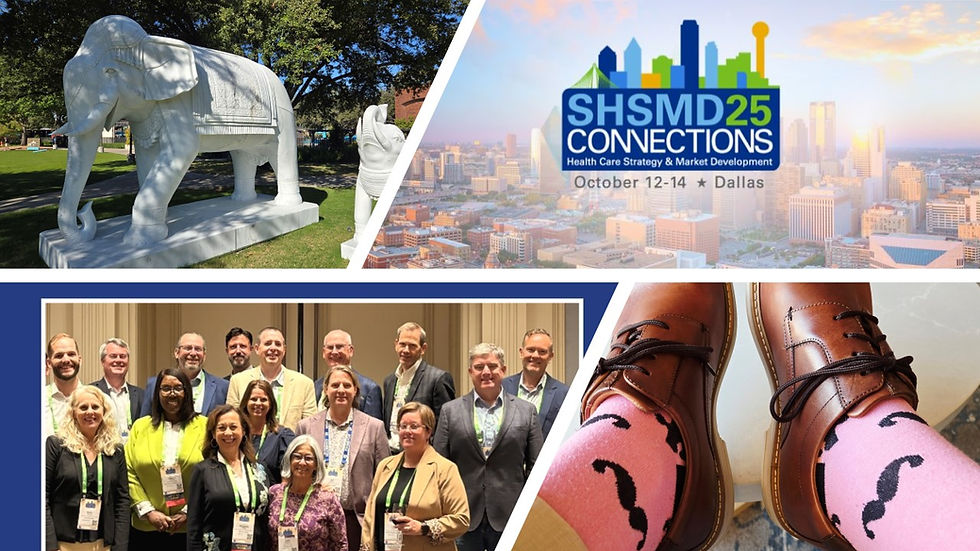COVID-19 reset: The 80% healthcare economy
- Alan Shoebridge

- May 6, 2020
- 3 min read

As many areas of the country prepare to reopen for elective surgeries and reassure their communities about hospital safety, healthcare marketers are building plans to reach out to their target audiences. Yet, a key question looms large: How have our prospective consumers and current patients been changed by COVID-19? How much business can we hope to recover in 2020?
A few weeks ago, I saw a tweet that has been stuck in my mind ever since. It was from Scott Gottlieb, MD, who served in the Trump administration as commissioner of the Food and Drug Administration from 2017 until April 2019. Here’s the tweet chain:
Ever since then, I’ve been trying to argue myself out of why healthcare would be any different than the rest of the "80% economy." It just seems logical that almost all industries – including healthcare – will not go back to full capacity anytime soon. (Side note: I strongly recommend following Dr. Gottlieb and Andy Slavitt as two essential Twitter accounts right now.)
In thinking about the impact to the healthcare industry, let’s start by acknowledging something right off the bat. As I’ve written about in the past, marketing healthcare services is different than marketing other products. In the simplest of terms healthcare is an avoidance product. Almost nobody wants to go to the doctor or the hospital. Ever. It can be scary and unpleasant even under the best of circumstances. Medical visits fall into the category of things we have to do. The highly motivated among us keep their regular check-ups and follow the advice of their doctors, but most of us just sort of muddle along.
Most consumer products provide a distinct contrast to this experience. With many consumer products – cars, electronics, bicycles (for me), etc. – people can spend a lot of time dreaming about their preferred models and adding up all the optional extras and enhancements. Often, these are aspirational actions that will likely never even result in an actual purchase. They are just fun to do. In comparison, nobody is spending their free time thinking about surgery to treat a condition they don’t currently have. I might end up needing a hip replacement in 30 years, but I’m for sure not researching all my options right now.
So, let’s combine that reality with some of the information we’re seeing from recent survey work about how perceptions of healthcare have changed in the COVID-19 era.
Here are two major challenges we’re likely to face:
1.Financial insecurity (Source: NRC Health)
2. Fear of getting care (Source: Revive Health)
So where does this all leave us?
There is so much going on with this data – and a lot of other facts and figures I could pull in too, like unemployment – yet there is one simple figure that I think speaks to me the most. It’s the 20% of people who won’t feel comfortable getting care for at least six months. For argument’s sake, let’s say that number slips a bit and in a few months from now it’s 15% who still want to wait it out. But let’s figure in another challenge that might come up; what if the unemployment rate climbs up another few percentage points meaning more people lose their health insurance? And what about the people who just don’t want to go out into society at large - including hospitals and medical clinics - until there is vaccine and/or better testing available? Now we’re probably back to that figure of 80% of our business returning to normal.
I think our future is recovering 80% of pre-COVID patient volume until there is some combination of a vaccine, a strong improvement in unemployment and more testing capacity. The big question is can we exist on 80% of our previous business for up to 18 months (or longer)?
In my next post, I'll address the steps and strategies that can help us as we get through the 80% healthcare economy.











Comments